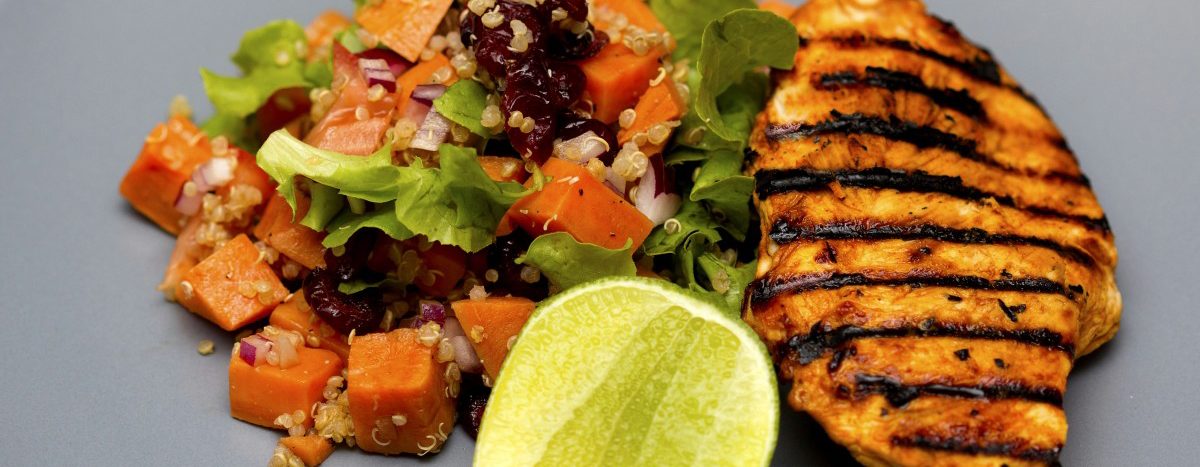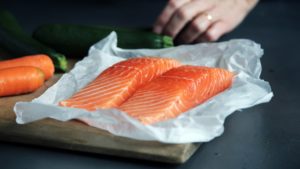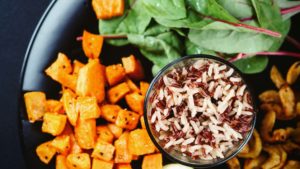
Do you find yourself questioning portion sizes or wondering if you’re getting the right amounts of the right types of foods?
A balanced meal helps promote satiety, curb cravings and boost metabolic function. Balanced meals also stabilize blood sugar levels so your energy levels stay high and your mood stays balanced. Win, win.
Here are my 3 steps to a balanced meal, every time.
Step #1: Pack On the Protein
Make sure to include a source of protein at every meal. Protein fills us up and keeps us full, which helps curb cravings and prevent overeating. Protein also helps to stabilize blood sugar levels, maintain lean muscle mass and support a healthy immune system.

Opt for: wild seafood, poultry, grass-fed meat, eggs, legumes, organic tofu/tempeh, plain full fat yogurt
Avoid or limit: processed meats (like bacon, sausage, and deli meat), fried protein sources (like fried chicken and fish) and processed soy products (like soy cheese and soy burgers)
How much do you need? Aim to consume at least a fist size full (2-3 eggs, or 4-6 oz. of fish, meat, or poultry) of protein at every meal.
Step #2: Pick Your Produce (Vegetables & Fruit)
Make sure to include a source of produce at every meal. Fruits and vegetables are loaded with health-promoting vitamins, minerals, fiber and antioxidants. Produce also supports optimal health, prevents disease and may help to boost our mood and energy levels.

Opt for: a variety of fresh and frozen fruits and non-starchy vegetables (like broccoli, cauliflower, leafy greens, and cucumbers)
Avoid or limit: canned, sweetened, fried or dried fruits and vegetables
How much do you need? Aim to make half your plate produce, especially veggies for lunch and dinner, or at least 1 cup at every meal. Over the course of the day, aim for 1-2 servings of fruit and 3+ servings of veggies.
Step #3: Optional: Add Whole Grains or Starchy Vegetables
Whole grains and starchy vegetables, such as potatoes and corn, can be included at every meal—but they are not essential to balancing out your plate. Whole grains and starchy vegetables are packed with vitamins, minerals and fiber. They can be a great addition to your meals if prepared in a healthy way.

Opt for: grains that are whole (like brown rice, quinoa and whole wheat) and starchy vegetables that are colorful (like sweet potatoes, winter squash and corn)
Avoid or limit: refined grains (like white bread and regular pasta) and starchy vegetables that are fried or prepared with a lot of fat (like cheesy potatoes)
How much? Aim to make no more than 25% of your plate whole grains or starchy vegetables or eat not more than 1/2-1 cup of whole-grains or starchy vegetables at each meal.
Need a reference for when you’re eating out? Print off this handy cheat sheet!

- Eating Behavior (47)
- Grocery Shopping Tip (9)
- Gut Health (42)
- Healthy Eating (49)
- Low FODMAP (13)
- Nutrition Articles (32)
- Recipes (27)
- Uncategorized (4)


